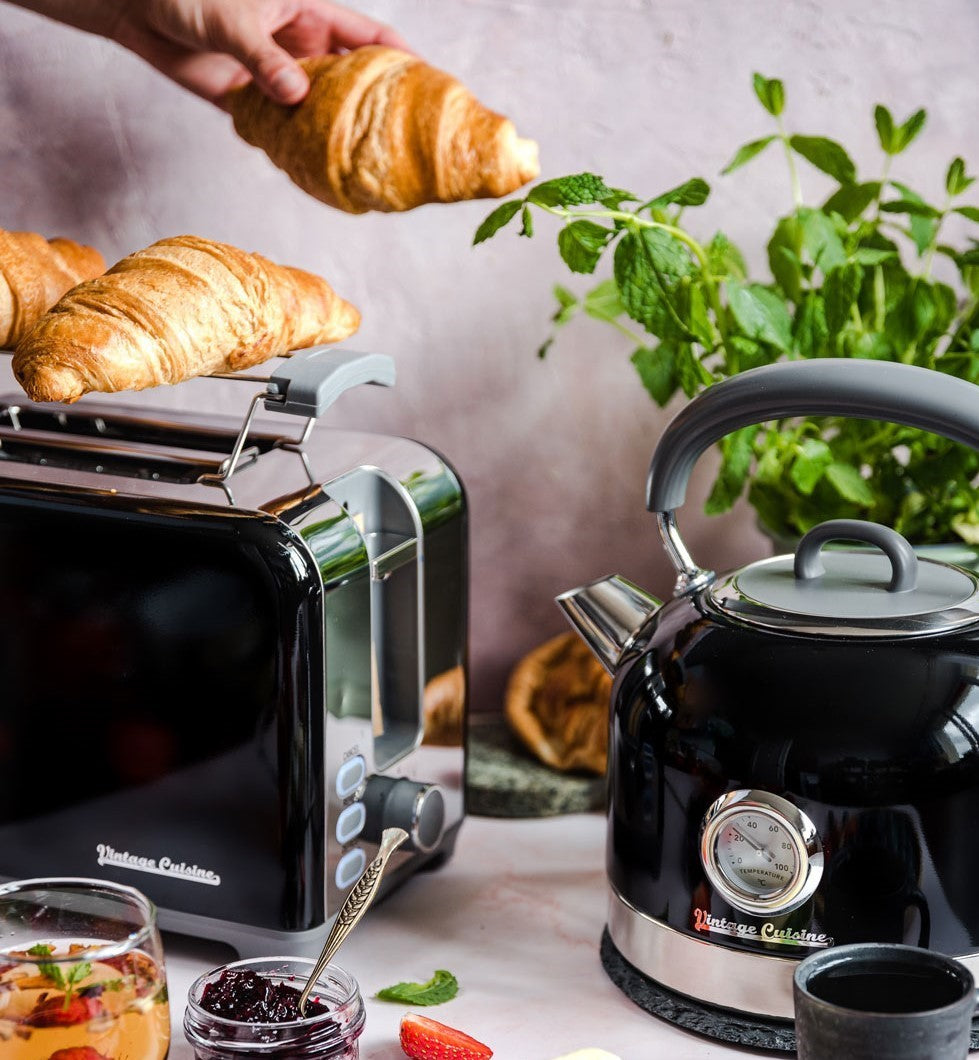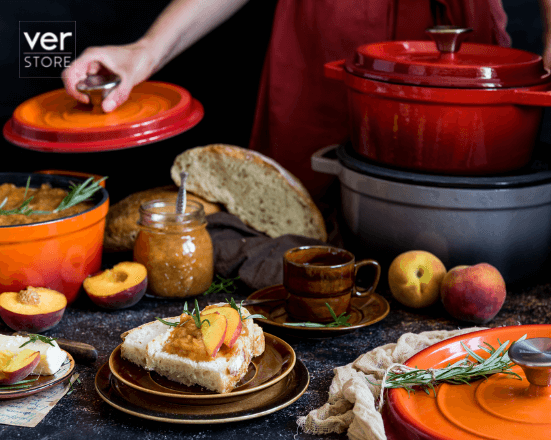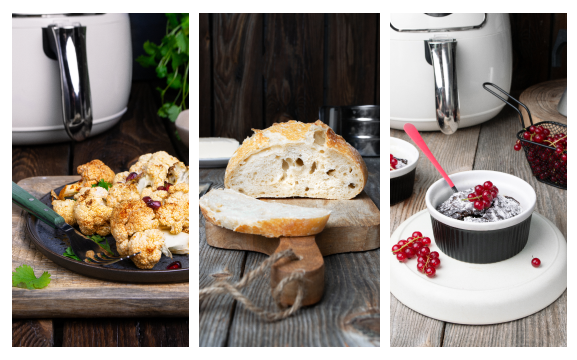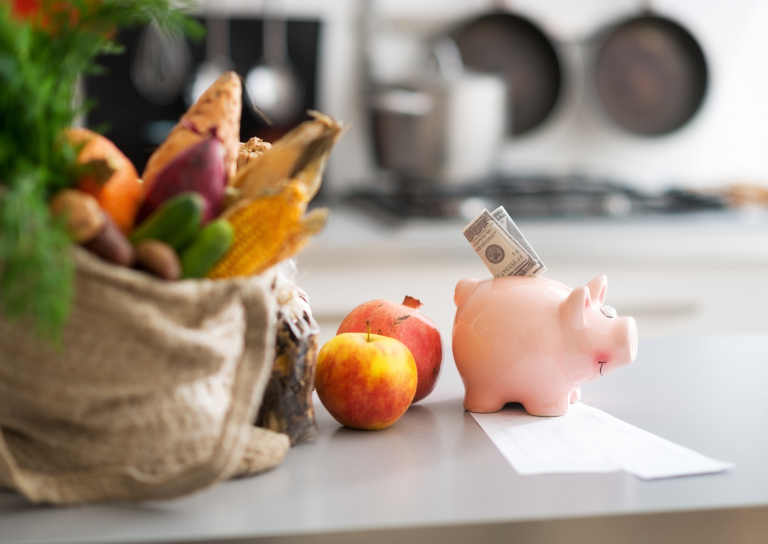June is the month for which we are impatiently waiting after the capricious spring time. It is not only more cheerful, but also ... tastier. Well, already in the middle of the year, in local grocers we will find the first harvest of fresh fruit and vegetables. Of course, a feast for the palate often comes with a high price, but at the peak of the harvest, we can find our favorite products at the lowest seasonal offers. And since the price is affordable, and the fruits and vegetables of the best sort - it's worth using this opportunity to supplement our pantry for autumn and winter!
Fruit season:
Already at the end of May, the first strawberries and rhubarb appear, but their price is relatively high. The peak of the harvest, so the lowest price is the beginning of July.
Blueberries, cherries, raspberries, mirabelles, apricots, peaches and apples will appear in early July , and the lowest price will appear in early August . Plums, blackberries and currants can be found already in August , and the lowest price can be found at the beginning of September .
Vegetable season:
At the turn of May and June, in the grocers you will find tomatoes, radishes, eggplant and cucumbers - an ideal opportunity to prepare home-made letcho, which will probably save the family dinner sometimes.
In early July, green beans, cauliflower, peas, Chinese cabbage will appear.
Why is it worth making preserves?
Health, quality, awareness:
- We know the condition of purchased strawberries and their taste
- We use good quality fruit all year round, instead of artificially grown fruit and vegetables in greenhouses
- We avoid packaging - plastic
In what pot to prepare preserves, plum jam, jams?
For the preparation of the above, time is the most important - and they need it the most, e.g. jam. Well, the roasting process lasts from a few to several hours - you can ask your grandmothers how long it took in their times. And if the heat treatment time is long - it is not difficult to burn. Therefore, the ideal solution is a cast iron pot , which is designed for long cooking / frying over a slow fire. An additional layer of enamel protects against scorching , and the feature of cast iron is also heat distribution.
In addition, putting a cover with insets allows for proper air circulation and condensation of water - which we want to get rid of.
How to prepare jam in a cast iron pot?
1. Of course, we start by washing the fruit, removing tails and seeds.
2. Then dry the plums.
3. At the beginning, the jam should be stirred regularly until it spreads and most of the water evaporates. Then the cycle: fry - stir - fry and stir.
❗️❗️ Important: remember to use silicone or wooden utensils so as not to damage the enamel of the pot and necessarily a small fire! During preparation, test the taste of the jam to adjust it to our preferences. The longer we fry - the plums will be sweeter, so we add sugar at the very end.
How to pasteurize preserves?
Our preserves stay fresh thanks to 2 factors:
- Sugar / salt / vinegar + hot water - these are natural preservatives .
- In addition, pasteurization or, in the case of preserves, often preserving is necessary to protect against the development of microorganisms .
Pasteurization is a process where food is heated to 100 °C.
Preserving is a process in which food in hermetically sealed packaging is heated to 100 °C.
Cooking in the pot:
1. You need a tall pot that is taller than the jars you are going to use.
2. Line the bottom of the pot with gauze or a clean cloth .
3. Place the jars at such a distance that they do not touch each other .
4. Place the jars as standard, with the lid up.
5. Fill the jars with hot water to the level below the cap and bring the water to a boil .
6. Pasteurize the jars for 20 minutes , then take them out and leave them to cool upside down for a minimum of 24 hours .
Preserving in the oven:
1. Set the rack in the oven at the right height so that the lid of the jar does not touch the top of the oven
2. Heat the oven to 130 °C.
3. Line the baking sheet with gauze (IMPORTANT - not with a cloth!).
4. Place the jars at such a distance that they do not touch each other .
5. Place the jars as standard, with the lid up.
6. Pasteurize the jars for 1 hour , then take them out and leave them to cool upside down on a clean cloth for a minimum of 24 hours.
Where and how to store preserves?
Everything has an expiration date, including homemade preserves. That is why it is especially important to mark the date of preparation on the jar after their preparation and, as it turns out later, also what the jar contains. Well, puree from sauce, jam from jam - it is often difficult to tell the difference.
We can store preserves from several months to even a year. It is assumed that it is safest to use them before the next season.
Printable labels for preserves:
HERE you will find color labels
HERE you will find white labels
❗️❗️ Important: no mold or mushrooms does not mean that the product is edible!
Where to keep preserves when we don't have a basement?
Usually, the first association that comes to mind when we hear the word "basement" is the thought of jars. In the current development trend, we have to pay dearly for the privilege of having underground space, and often there is no such offer. So what if we don't have a basement?
Why is the cellar the perfect place for preserves?
- Low temperature
- No or limited access to light
Solutions for people without a basement:
- Kitchen cabinets as long as they are away from the oven and stove
- Only those that are not exposed to direct sunlight
- A good choice are those that are located directly under the window
- Necessarily with air circulation
We can also take advantage of the additional space on the upper shelves in the wardrobe, in additional bed drawers or in furniture that stands on the balcony.
Why do preserves go moldy / spoil?
There is nothing worse than being disappointed when our jars are attacked by mold. Therefore, below are a few rules of what to avoid so that the preserves do not go moldy:
- Choose fruits and vegetables that are not "overripe"
- Use clean, preferably scalded jars
- Check the jar/lid for damage
❗️❗️ IMPORTANT - during cooking, if you check the taste - use new cutlery each time - a bit of saliva causes the development of micro-organisms Use the preserves before the beginning of the next season, i.e. up to a year from their preparation











